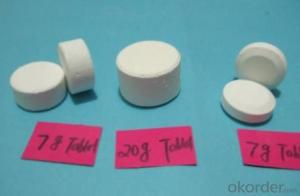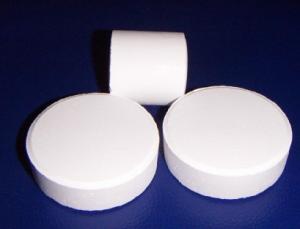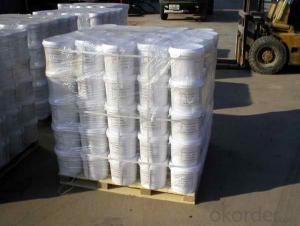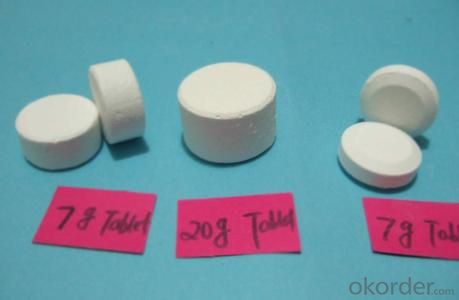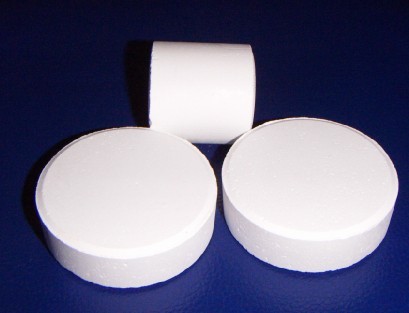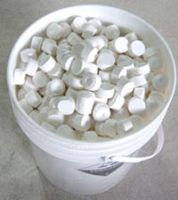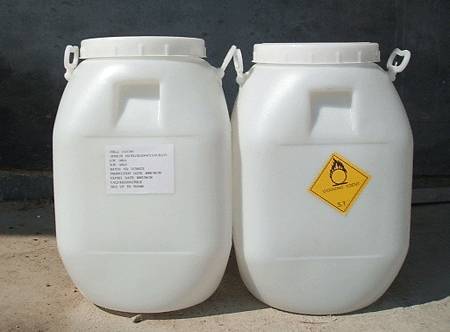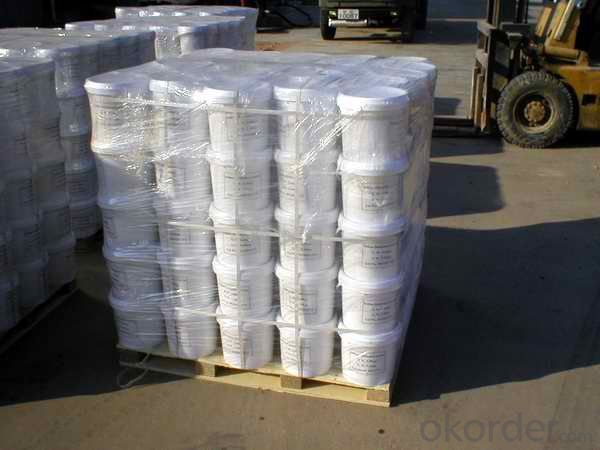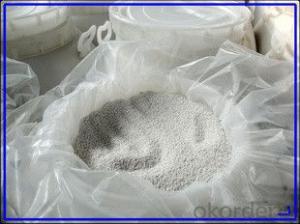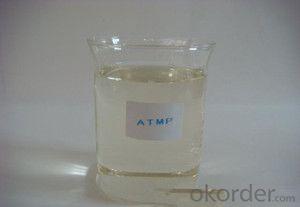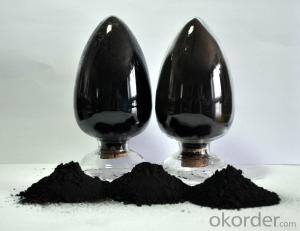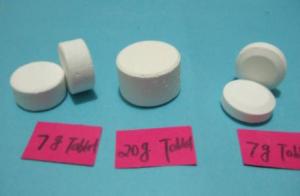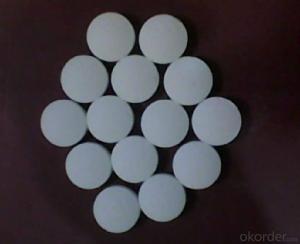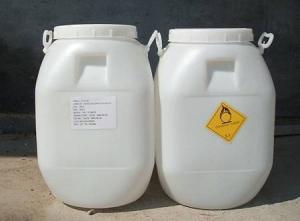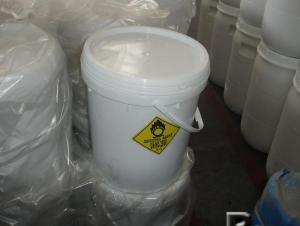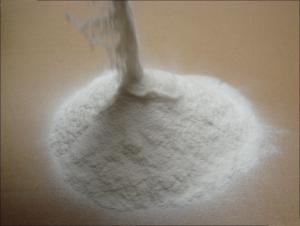Pool Disinfectant SDIC Powder Granular Tablets
- Loading Port:
- Tianjin
- Payment Terms:
- TT OR LC
- Min Order Qty:
- 17 m.t.
- Supply Capability:
- 1800 m.t./month
OKorder Service Pledge
OKorder Financial Service
You Might Also Like
SDIC
The Structure Of SDIC Introduction:
CNBM--SDIC White powder or grain with chlorine odor . It is a strong oxidant and chlorate agent and can dissolved in water easily . Its aqueous solution assumes weak acidity and the active chlorine in its dry products lose little when it is stored for a long time at the atmospheric temperature .
Quick dissolving tablet within 10 minutes. It is used in hospital, hygienic, disaster protection, food industry, and aquaculture etc.
The tablet have 0.5g, 1.0g, 3.3g, 5g, 7g, 10g.
Packed in 100g, 500g, 1kg, 2kg, 3kg & 5kg plastic bucket.
And we can supply tablet form: 1g, 2.7g, 3.3g, 3.5g, 5g, 10g & 20g.Package: in 500g, 1kg, 2kg, 5kg or do with customer requirements
Main Feautures of SDIC:
Good Quality, Powder, Granular, Tablets.
SDIC Image:
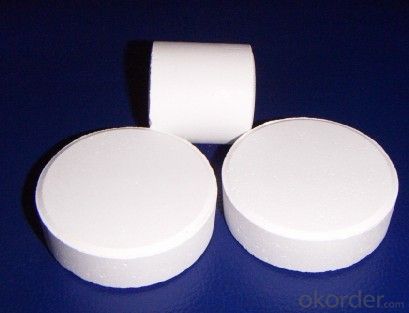
SDIC Specification:
Chemical Name | Sodium Dichloroisocyanurate | |
Molecular Formula: | C3O3N3HCL2NA | |
Molecular Weight: | 220.96 | |
CAS Number: | 2893-78-9 | |
Product | 60% | 56% |
Available chlorine(%,min) | 60 | 56 |
Moisture content(% max) | 5 | 8 |
PH Value(1% solution) | 6-7 | 6-7 |
Particles Size:
Mesh | 5~8 | 8~30 | 20~40 | 20~60 |
Application of SDIC in water treatment
1)It can be used for swimming pool and drinking water treatment, clean the industrial circulating water.
2)It can be used as preventive disinfection of house, hotel, hospital and public place; used on the environmental sterilization of raising fish.
3)It can be used to bleach the textile, to prevent wool from shrinkage, to prevent paper by decay and act as rubber chlorination.
Package:
50KG PLASTIC DRUMS/ FIBER DRUMS.
25KG PLASTIC DRUMS/FIBER DRUMS.
1000KG BIG BAGS.
Or any other packages suggest by customers.
- Q: Is the catalyst considered a chemical reaction?
- The catalyst is involved in the reaction, but in the reaction process is a step in the effect of its shape has not changed, so that did not participate in the reaction.The role of the catalyst is to reduce the activation energy of the reaction, the original one reaction into two or Multiple reactions, each sub-reaction of the activation energy is very low, the reaction is very good, the effect is the total reaction faster. Hope to adopt
- Q: The addition of the catalyst has no effect on the chemical equilibrium of the movement
- Factors that affect the chemical balance of movement are mainly concentration, temperature, pressure and so on.
- Q: The "one-to-two change" of the catalyst is that the quality and chemical properties of the reactants are constant or the quality and chemical properties of the catalyst are constant?
- The quality and chemical properties of the catalyst are unchanged
- Q: What about the chemical reaction of the catalyst if there is no catalyst?
- The catalyst used to heat and hold, the material will not react between.
- Q: How are the 4 characteristics of a catalyst (1. organic or inorganic 2. reusable 3. Highly specific, and 4. lowers activation energy) important in preforming life functions? please be as specific as possible, i understand that these are characteristic, i just don't understand why they're beneficial, other than the reusable and lowers activation energy one.
- Organic or Inorganic - the catalyst (enzyme) must be organic to be found in the cell. Catalysts speed up chemical reactions inside a cell and must therefore be organic to be a functioning part of the cell. Reusable - There are so many reactions that catalysts are involved in that it would be a waste for the cell if a catalyst could only last one reaction, especially if there are inhibitors and competition for the active site. Catalysts must be reusable in order to keep the cell functioning. Catalysts always remain unchanged after a reaction. HIihly Specific - Catalysts are only made to catalyze one specific chemical reaction. Their active site has proteins bonded in such a way that only certain elements can enter the active site and H bond with those proteins. The fact that they are highly specific maximizes the productiveness of the cell. And it ensures that the cell only has catalysts to reactions that it needs to be completed. It also ensures that the elements are correctly bonded with eachother. If any two elements could enter the active site, there is no guarantee that the correct product will be produced. Catalysts and Enzymes must be super highly specific in order to properly function. Lowers Activation Energy - The more energy a cell has to spend to catalye a reaction, the worse it is for the cell and the less ATP is has for other reactions. Catalyts hold the substrates together so there is less energy that is needed to have the two substrates react with eachother. Activation Energy is the energy that is needed to start a reaction. So the less energy used by the cell for reactions, the better for the cell. Hope this helps
- Q: What kind of chemical substances can seriously damage the ozone layer, as a catalyst or reactants can be?
- Freon decomposition of free radicals. The destruction of our ozone is mainly caused by him. Chlorine free radicals are also available.
- Q: My chemistry teacher wont tell me because it's in the higher course. And i'm not waiting a whole year to find out. And also, google is being a gimp about it. So thanks a lot if you know, I only have basic chemistry knowledge btw, lumen'ss terms if you can.
- Catalysts facilitate the reaction. They might work in several ways. Here is an example: Catalysts generally react with one or more reactants to form intermediates that subsequently give the final reaction product, in the process regenerating the catalyst. The following is a typical reaction scheme, where C represents the catalyst, X and Y are reactants, and Z is the product of the reaction of X and Y: X + C → XC (1) Y + XC → XYC (2) XYC → CZ (3) CZ → C + Z (4) Although the catalyst is consumed by reaction 1, it is subsequently produced by reaction 4, so for the overall reaction: X + Y → Z They might also just increase the surface area, thus speeding up the reaction. Example: Coke looses its fizz over time if left with the cork unscrewed. This is because the HCO3 is released as CO2. If you drop a menthos into the coke, it explodes with CO2, because the methos is full of tiny dents in the surface (thus giving it a massive surface area). (i blatantly copied the first example from the wiki)
- Q: What is the difference between a catalyst and an inducer in a chemical reaction?
- The catalyst does not participate in the reaction, but only the carrier of the reaction; the inducer will participate in the reaction
- Q: I have just spent CAN$550 to replace a catalyst converter at one end of the muffler. The repairman said I need to replace the oxygen sensor very soon, otherwise, the C.C. will be gone again. Is that true... can someone confirm this for me. Thanks.
- With a four cylinder engine, the code definition should have read: B1S1 (for the upstream sensor responsible for fuel/air ratio monitoring) or B1S2 (for the sensor downstream of the catalytic converter, which only monitors that part). If you changed the front (S1) sensor and you still have a code for it, save your old sensor as there may be nothing wrong with it. If the code is for the O2 sensor heater, check your fuses. If not, the code is probably a symptom of another problem, such as a misfire, restricted fuel filter or intake air leak. Is this the same code you got previously? Did you install a direct-fit replacement or a universal sensor that had to be configured for your honda's wiring connector?
- Q: put in a way that a freshman in high school can understand please =)
- enzymes are a type of catalyst
Send your message to us
Pool Disinfectant SDIC Powder Granular Tablets
- Loading Port:
- Tianjin
- Payment Terms:
- TT OR LC
- Min Order Qty:
- 17 m.t.
- Supply Capability:
- 1800 m.t./month
OKorder Service Pledge
OKorder Financial Service
Similar products
Hot products
Hot Searches
Related keywords
